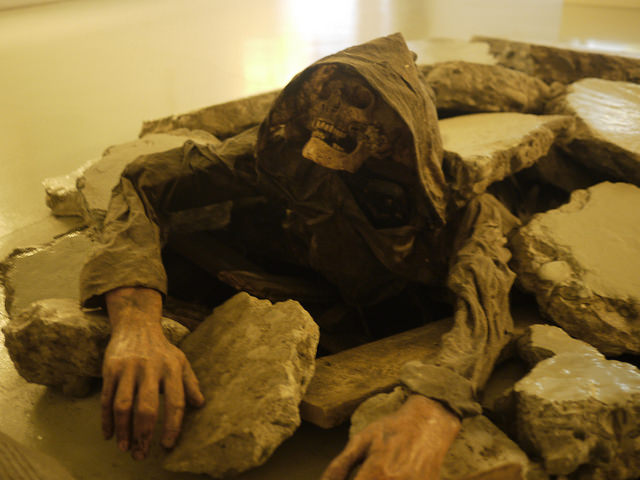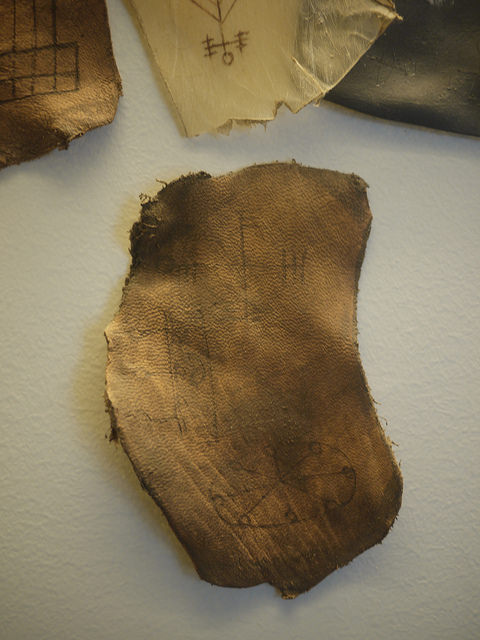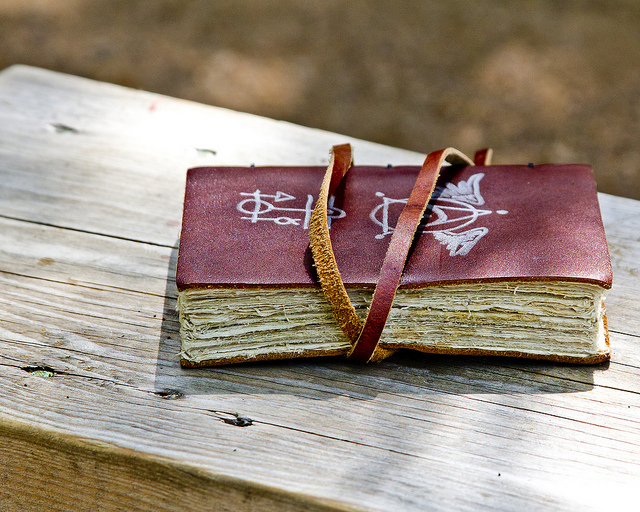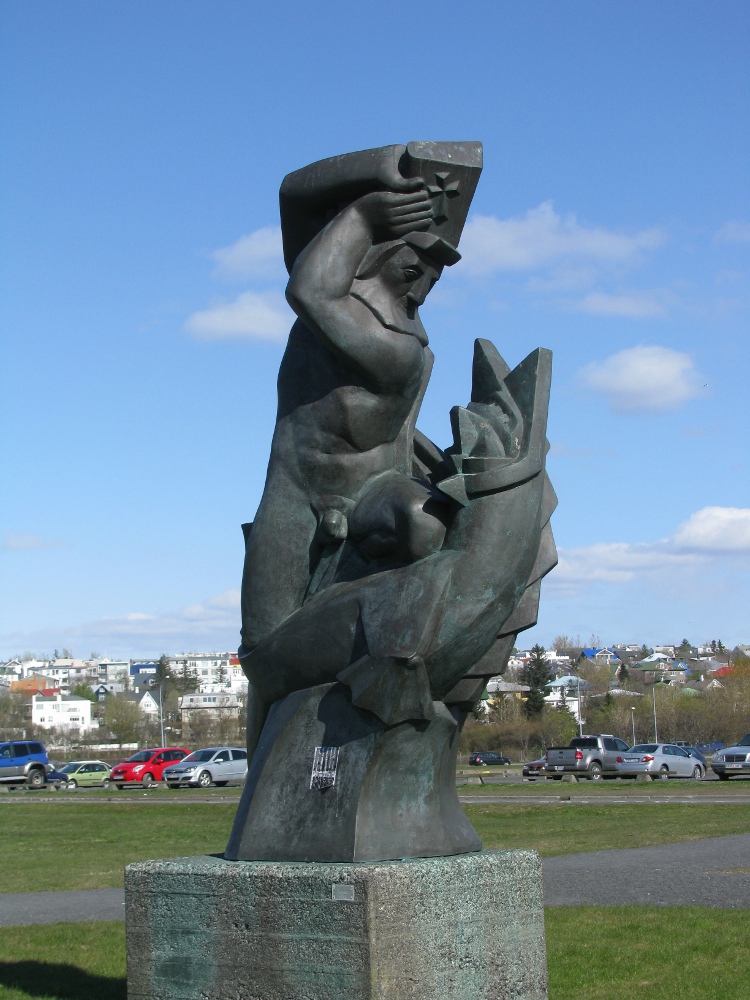The two great sorcerers of Iceland. Posted by hulda on Oct 24, 2014 in Icelandic culture, Icelandic history
Last week’s entry about witchcraft in Iceland mentioned one interesting man, Galdra-Loftur (= Loftur the Magician), who’s definitely worth a closer look. The legend does not paint a very flattering image of him: he’s shown as an egoistical, cruel person who uses his talent and skills for his own profit only and does not care who he tramples underfoot on the way. In many ways he’s the polar opposite of the other famous Icelandic scholar-magician, Sæmundur fróði or Sæmundur the Wise, who used his to help others and occasionally to save his own soul from his former school master, the devil himself.
You could for example compare their attitudes towards women who were pregnant out of wedlock. Sæmundur saved a servant girl who the devil had fooled into promising him her unborn child, Loftur murdered the mother and the child he himself had fathered in cold blood. In general Sæmundur seems to have valued women to a great deal, yet he, too, caused the death of the woman who bore his children.
The story goes that he once told the women of his household that each day bore a short wishing moment during whatever wish was said aloud would come true, but that he alone knew which moment it was as it changed every day. One day he saw the moment approach and let the others know, at which one of the servant girls made a wish that she could bear Sæmundur seven sons. Sæmundur was taken by surprise and angrily replied “and die at the last one” but alas the wishing moment had not quite passed… the two did end up married, she did indeed give Sæmundur seven sons and, sadly, died giving birth to the seventh. Sæmundur himself was said to have regretted his words right away, so though both men caused the deaths of their lady friend and wife I’d still say Sæmundur had no actual wish to harm her, whereas Galdra-Loftur had it all planned out.
Loftur mistreated women quite badly otherwise as well. Killing was one thing, but he also turned another servant girl into a steed and rode her, injuring her gravely in process. The scene reminds me of an even earlier legend, that of the kveldriða (= night rider). They were female and used their skills to overpower others and ride them until their victims died or were at the verge of death. Eyrbyggja saga in particular has such a scene between an old woman who was infatuated with a young, beautiful man. He turned her down, disappeared one night and was found in the morning unconscious and so battered it took him months to heal. The details of the two legends bear such similarities that it does give Loftur’s story a hint of sexual violence, and well, that too would fit the description of his character.
What cemented the legend of Loftur though was neither of these stories that are actually quite typical for Icelandic witches. No, unlike Sæmundur the Wise, Loftur the Sorcerer was never happy with the amount of knowledge he had amassed and even lamented that the Black University (which Sæmundur went to) was no longer open for human students and therefore he had no way of ever learning enough magic to fool the devil, which to him was just as crucial as to Sæmundur. Sæmundur had broken a deal with the devil using his own cunning and skills but Loftur had no such means, and he knew that once death approached his soul would be doomed unless he would somehow become smarter than the devil, too. He hatched a plan.
A bishop by the name of Gottskálk grimmi Nikulásson (= Gottskálk the Cruel) who had written one of the most legendary books on black magic called Rauðskinna (= red skin) and who had been buried with his own creation sprang to his mind. Galdra-Loftur threatened a fellow student until he agreed to help him out with his plan, met him at the church that the bishop had been buried under and together they began to rise him from death. The nameless student was to stand by the bell ropes and ring the bells at Galdra-Loftur’s command while Galdra-Loftur himself began a Black Mass. He turned each prayer into a curse or a celebration of the devil, and the dead began to rise from under the church, last of which was Gottskálk who indeed held onto a red book. He leered at Galdra-Loftur that he’d never gain his book and teasingly held it just outside of his reach. Galdra-Loftur replied by more satanic verses and the whole church began to shake, which was too much for the student by the bell: he grabbed the ropes and began to ring them and all the dead vanished.
Thus Galdra-Loftur never gained the book he had been after. He confessed that Gottskálk had been vastly more powerful than himself and that had he kept on chanting the whole church would have fallen underground, which had been the bishop’s plan. What was worse he now knew his death day approach fast, and though a local priest attempted to help him, in the end the devil grabbed Loftur’s boat as he was rowing and pulled him under, the boat and all.
What’s most interesting about Galdra-Loftur, as with Sæmundur the Wise, is that they were both real people. Loftur’s real name was Loftur Þorsteinsson (1702 – ?) and he indeed studied at Hólar, though he never seems to have graduated as he died at an early age – or at least there are no records of him past the age of 20. Gottskálk grimmi Nikulásson was likewise a real bishop who was born 1469 and died 1520, Norwegian of origin and famous for his strict and merciless ways of gaining more property to the cross. There’s also a variation of the legend that states Loftur had had not one accomplice but three, Einar Jónsson, his brother Galdra-Ari and Jóhann Kristjánsson, all men who lived in his time and studied at the Hólaskóli (= School at Hólar) at the same time with him. All of them had a reputation for knowing magic or having a natural tendency towards it, something that’s often linked to scholars in Iceland in general. Although suspecting students of getting too ambitious in their knowledge on dark arts is nothing unusual in old legends, what makes Iceland stand out is that it was not always considered a bad thing and that even gaining your skills from Old Nick himself was not automatically a sign of evilness. All depended on how the witchcraft was put to use – to serve the community like Sæmundur’s, or one’s self only like Galdra-Loftur’s.

Build vocabulary, practice pronunciation, and more with Transparent Language Online. Available anytime, anywhere, on any device.
About the Author: hulda
Hi, I'm Hulda, originally Finnish but now living in the suburbs of Reykjavík. I'm here to help you in any way I can if you're considering learning Icelandic. Nice to meet you!








Comments:
Eve Markowitz Preston:
Hello, Hulda,
Just discovered your blog today, as I was looking up “Loftur the Sorcerer,” after seeing it referenced in Arni Thorarinsson’s “Season of the Witch.” I am a New York City-based psychologist with a strong interest in both Iceland and the Icelandic language, which I am enjoying learning on my own in advance of my next trip to beautiful Iceland. I’ll look forward to reading some of your other posts! Eve
hulda:
@Eve Markowitz Preston Glad to hear that, the ‘supernatural’ tag might be also interesting for all the very Iceland-specific monsters, hidden people and magical things Iceland has. Gangi þér vel í náminu! 🙂